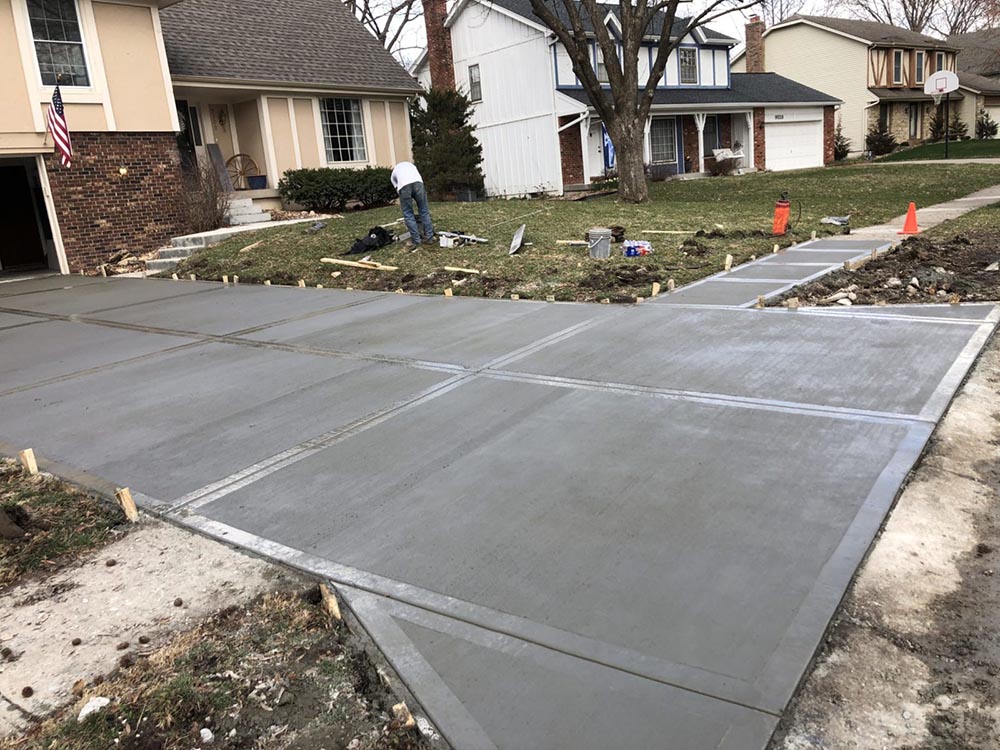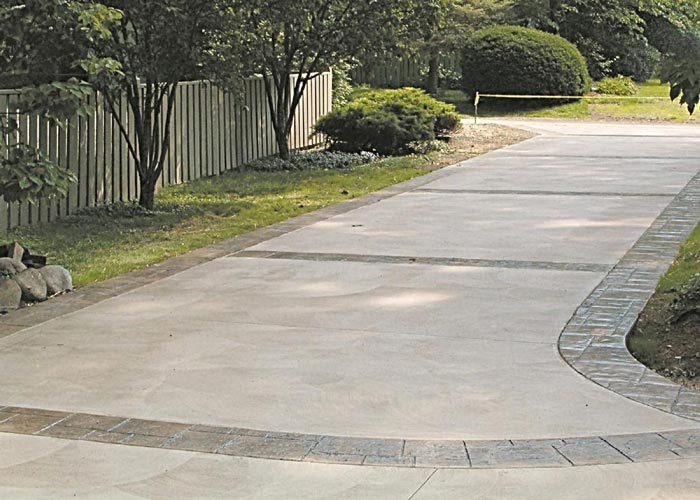From Principle to Completion: Partnering with a Premier Concrete Contractor
From Principle to Completion: Partnering with a Premier Concrete Contractor
Blog Article
The Green Selection: Concrete Sidewalks for Your Community
Concrete pathways are an ubiquitous attribute in a lot of neighborhoods, yet their influence on the environment is commonly neglected. Nevertheless, picking concrete for your community sidewalks can make a substantial difference in regards to sustainability and eco-friendliness. The benefits of selecting concrete exceed mere looks and functionality. By thinking about the environmental benefits and lasting results on the area, the selection of products for walkways ends up being an important decision. Let's discover why concrete walkways may be the environmentally friendly selection your area needs.
Advantages of Concrete Sidewalks
When thinking about the setup of sidewalks in a neighborhood, the advantages of picking concrete over various other materials are significant and many. Concrete pathways offer resilience, withstanding hefty foot web traffic, climate variations, and ecological elements better than alternative products like asphalt or gravel. This long life converts to cost-effectiveness over time, as concrete sidewalks require much less frequent fixings and upkeep. In addition, concrete is a flexible product that can be easily tailored to enhance the aesthetic of any type of area with numerous finishes, colors, and patterns.

Longevity and Longevity
Just how can concrete pathways exceed other products in regards to durability and durability? Concrete sidewalks are renowned for their extraordinary sturdiness and durability compared to alternate materials like asphalt or pavers. The integral strength of concrete makes it very resistant to splitting, changing, and basic wear and tear brought on by foot traffic, climate fluctuations, and various other ecological variables. Unlike asphalt, which can soften in heats and split in cold problems, concrete preserves its structural integrity, calling for minimal maintenance with time.
Concrete walkways likewise have a longer lifespan than pavers, which are vulnerable to unequal settling, weed development in between joints, and specific paver movement. The strong, continuous surface of concrete minimizes tripping hazards and ensures a smooth walking path for pedestrians. Furthermore, concrete's longevity minimizes the need for regular repairs or replacements, making it a lasting and affordable selection for community pathways. By purchasing concrete sidewalks, areas can appreciate a long-lasting and reliable infrastructure that enhances the total aesthetic charm and functionality of the area.
Reduced Upkeep Needs
Concrete walkways stand out for their marginal upkeep demands because of their sturdy nature and long-lasting performance. Unlike alternative materials that might need regular repair work or replacements, concrete pathways supply a cost-effective solution that requires little upkeep with time. Among the vital advantages of concrete walkways is their resistance to weathering and erosion. This means they can withstand rough weather, hefty foot Home Page web traffic, and other ecological variables without deteriorating rapidly.
Routine upkeep for concrete walkways generally involves straightforward tasks such as routine cleansing to get rid of debris and occasional sealing to shield the surface area. In comparison to products like asphalt or pavers that may move, fracture, or break down even more easily, concrete pathways maintain their structural integrity with marginal intervention. Furthermore, any kind of fixings that may be needed are generally local and can be dealt with swiftly, decreasing both the moment and price connected with maintenance.

Ecological Benefits
With an emphasis on sustainability and eco-friendliness, concrete sidewalks offer noteworthy environmental benefits that add to a greener neighborhood infrastructure. Additionally, concrete pathways have a high solar reflectance index, indicating they mirror a substantial quantity of sunlight rather of preserving and soaking up warmth.
Moreover, concrete is a permeable material that allows water to penetrate into the ground, lowering stormwater overflow and aiding in groundwater recharge. This aids stop erosion, minimize flooding, and maintain the natural equilibrium of water systems in the community. By choosing concrete sidewalks, communities can make a lasting selection that favorably influences the atmosphere and improves the lifestyle for residents.
Enhancing Area Sustainability
By focusing on sustainable facilities services, areas can cultivate a harmonious balance between ecological awareness and community development. Enhancing neighborhood sustainability includes a complex technique that goes past simply the ecological benefits of concrete pathways. Implementing eco-friendly rooms, advertising energy-efficient practices, and fostering a feeling of area involvement are important components of producing a sustainable community.
One means to improve area sustainability is with the integration of permeable concrete pathways. These walkways enable rain to seep into the ground, minimizing stormwater overflow and lessening the pressure on metropolitan drainage systems. Concrete Companies Near Me. By including permeable pathways, neighborhoods can enhance water quality, lower flooding dangers, and boost overall ecological resilience
Moreover, advertising different transport approaches such as strolling and cycling can substantially reduce carbon discharges check my reference and advertise a healthier way of life amongst homeowners. Producing risk-free pedestrian pathways, bike lanes, and designated greenways can urge residents to depend much less on vehicles, even more contributing to the area's sustainability goals.
Final Thought
To conclude, concrete sidewalks use various advantages for areas, consisting of resilience, reduced upkeep demands, and ecological benefits. By picking concrete sidewalks, communities can enhance their sustainability and contribute to a more environment-friendly environment. It is clear that concrete walkways are the excellent option for communities wanting to improve their facilities in a resilient and ecologically pleasant manner.
When considering the installment of walkways in a neighborhood, the advantages of picking concrete over various other products are numerous and substantial. In addition, concrete's sturdiness reduces the need for frequent repairs or substitutes, making it a affordable and sustainable selection for area pathways (Legendary Concrete Click Here Brentwood).With a focus on sustainability and eco-friendliness, concrete walkways use remarkable environmental advantages that add to a greener area infrastructure. Enhancing community sustainability includes a complex strategy that goes beyond just the environmental advantages of concrete pathways.In verdict, concrete pathways use many benefits for areas, including resilience, low upkeep requirements, and ecological advantages
Report this page